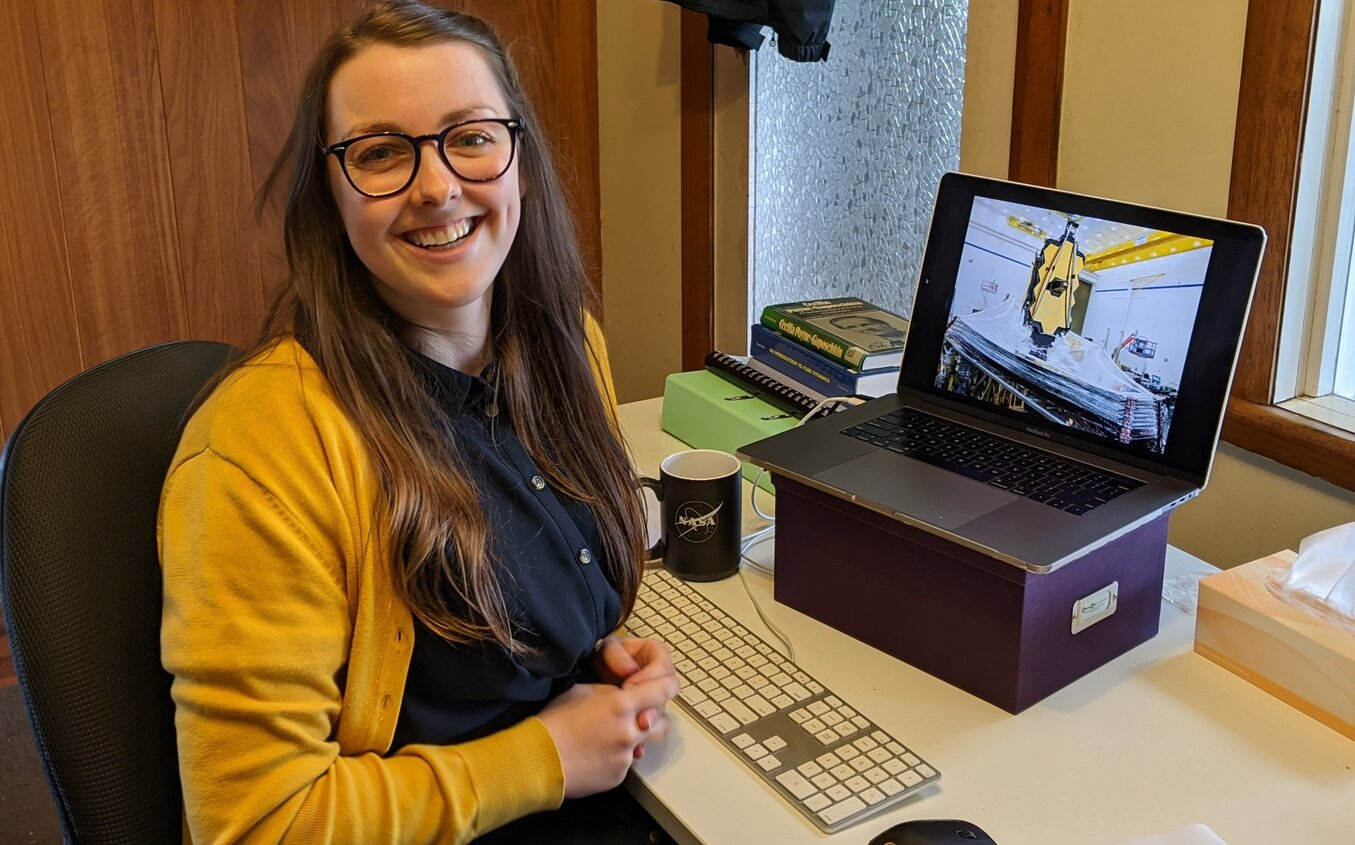Oct 16 2020
At the University of Melbourne, two new studies have been performed and will help the most robust, largest, and complex space telescope ever created to unravel galaxies that mankind has never observed before.
 Madeline Marshall’s research has looked at simulations of the James Webb Space Telescope, which is undergoing final tests before being launched to space next year. Image Credit: Madeline Marshall.
Madeline Marshall’s research has looked at simulations of the James Webb Space Telescope, which is undergoing final tests before being launched to space next year. Image Credit: Madeline Marshall.
The papers, which were published in The Astrophysical Journal and the Monthly Notices of the Royal Astronomical Society, reveal that NASA’s James Webb Space Telescope, planned for launch in late 2021, will disclose hidden galaxies.
Strong lights termed “quasars” are the brightest objects present in the universe. They are powered by supermassive black holes up to a trillion times the mass of the Sun and outshine the whole galaxies containing billions of stars.
Simulations carried out under the guidance of Science Ph.D. candidate, Madeline Marshall, indicate that while even NASA’s Hubble Space Telescope cannot observe galaxies hidden at present by these quasars, the James Webb Telescope can get past the glare.
“Webb will open up the opportunity to observe these very distant host galaxies for the first time,” stated Ms. Marshall, who carried out her research at the ARC Centre of Excellence in All Sky Astrophysics in 3 Dimensions (ASTRO 3D).
That can help us answer questions like: How can black holes grow so big so fast? Is there a relationship between the mass of the galaxy and the mass of the black hole, like we see in the nearby universe?
Madeline Marshall, Science PhD Candidate, University of Melbourne
It is a known fact that quasars dwell at the centers of galaxies, but it has been challenging to predict the characteristics of the galaxies and how they compare to galaxies that lack quasars.
Ultimately, Webb’s observations should provide new insights into these extreme systems. The data it gathers will help us understand how a black hole could grow to weigh a billion times as much as our Sun in just a billion years. These big black holes shouldn’t exist so early because there hasn’t been enough time for them to grow so massive.
Stuart Wyithe, Study Co-Author, ASTRO 3D, University of Melbourne
The research team from the University of Melbourne collaborated with scientists from The Netherlands, Germany, China, and The United States to utilize the Hubble Space Telescope to try to see these galaxies.
Then, they employed an advanced computer simulation method known as BlueTides, which was created by a research team under the guidance of ASTRO 3D distinguished visitor Tiziana Di Matteo, from Carnegie Mellon University in Pittsburgh, Pennsylvania, United States.
BlueTides is designed to study the formation and evolution of galaxies and quasars in the first billion years of the universe's history. Its large cosmic volume and high spatial resolution enables us to study those rare quasar hosts on a statistical basis.
Yueying Ni, Carnegie Mellon University
Ni ran the BlueTides simulation. The simulations were used by the researchers to identify what would be observed by Webb’s cameras if the observatory explored these remote systems. They discovered that it would be feasible to differentiate the host galaxy from the quasar, though it is still difficult because of the small size of the galaxy in the sky.
Moreover, the researchers identified that the galaxies that host quasars were smaller compared to average, spanning only around 1/30 the diameter of the Milky Way though they contained almost as much mass as the Milky Way galaxy.
“The host galaxies are surprisingly tiny compared to the average galaxy at that point in time,” added Ms Marshall.
Journal Reference
Marshall, M. A., et al. (2020) Limits to Rest-frame Ultraviolet Emission from Far-infrared-luminous z ∼ 6 Quasar Hosts. The Astrophysical Journal. doi.org/10.3847/1538-4357/abaa4c.